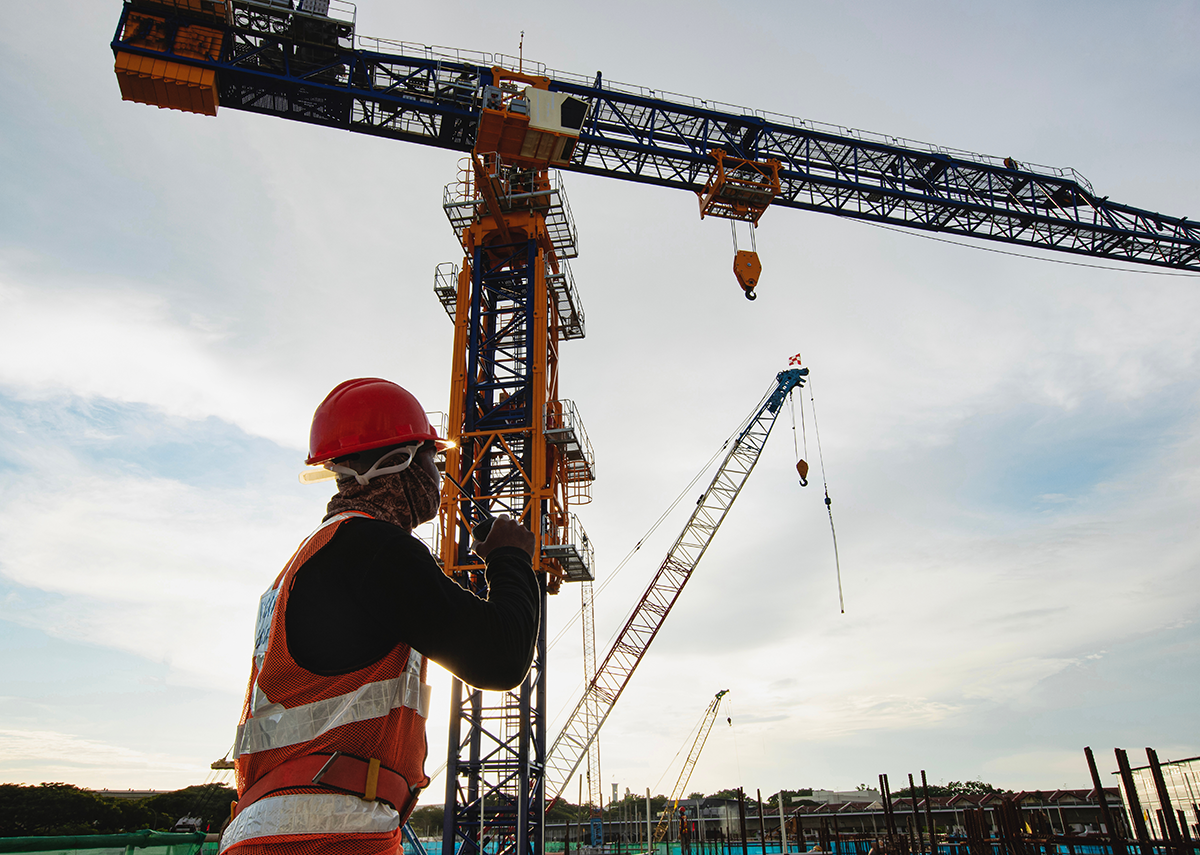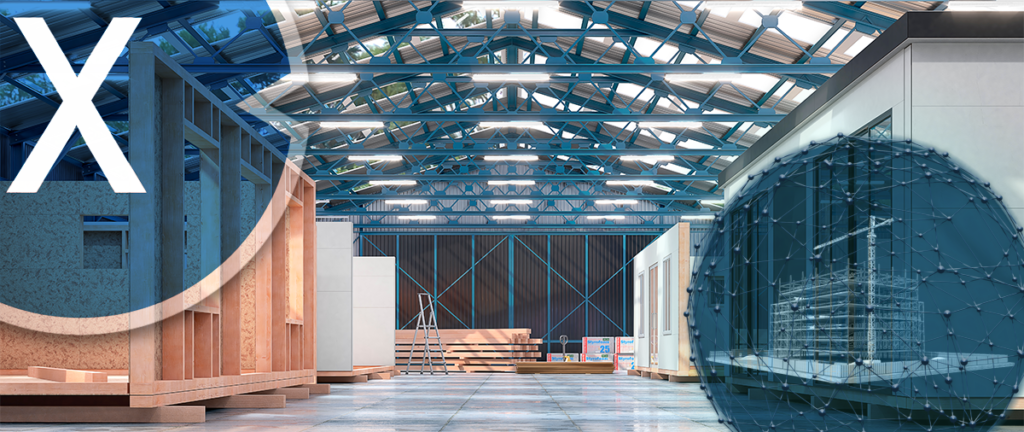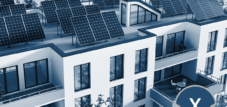Strategies for optimizing housing construction in Germany: With the government's 14-point plan
Language selection 📢
Published on: September 27, 2023 / Update from: September 27, 2023 - Author: Konrad Wolfenstein
🏗️ Traffic light coalition sets out 14-point plan to end the construction crisis
🏠 The ongoing housing shortage in Germany
Housing construction in Germany has been experiencing a continuous crisis for years. The lack of affordable housing is getting worse. Projects are stopped due to high costs and bureaucratic hurdles. The result: Families give up the dream of owning their own home while construction companies slide into bankruptcy. Tenants, owners and the construction industry itself see the federal government as having a duty and are sharply criticizing its current management of the situation.
🤝 Joint summit in the Chancellery on September 25, 2023
In order to finally find a constructive solution, an important meeting took place in the Chancellery on September 25, 2023. The aim of this summit was to develop an effective plan to build more housing quickly and cost-effectively. The federal government presented its 14-point plan as a concrete measure.
🎙️ Statements by Chancellor Scholz during the press conference
Chancellor Olaf Scholz pointed out that there is already a significant backlog of approved but not yet implemented construction projects in Germany. As a solution, the federal government is offering the introduction of declining balance depreciation. This is intended to relieve the financial burden on builders and speed up housing construction.
💰 Financial incentives and tax benefits from October 1, 2023
From October 1, 2023 to September 2029, new buildings will be subsidized with a declining balance of six percent. This regulation should not only apply to private landlords, but also to large real estate groups.
📈 Further measures for sustainable improvement
In addition to tax incentives, other assistance is also planned:
👨👩👧 Cheap loans for families
In order to make it easier for private households to access property, affordable financing options are provided.
🏗️ Relaxation of insulation regulations
The current strict requirements for the insulation of new buildings are to be relaxed in order to reduce construction costs.
💵 Improved depreciation options for landlords
In order to further stimulate housing construction, depreciation options for landlords will be improved.
With these and other suggestions from the extensive package of measures, the federal government hopes to finally stimulate housing construction in Germany again and create a win-win situation for everyone involved.
📊 Declining depreciation (Depreciation) of 6%: What does that mean?
Declining balance depreciation means that an asset, in this case a new building, is not depreciated evenly over its useful life. Instead, a fixed percentage is applied to the remaining book value of the asset. With a declining balance depreciation rate of 6%, 6% of the respective book value of the building is recorded as depreciation costs each year.
🎯 Advantages of declining balance depreciation
1. Liquidity advantage
The higher depreciation in the first few years leads to a tax reduction because the depreciated costs reduce the taxable income. This improves the builders’ liquidity.
2. Incentive for investment
The possibility of faster depreciation makes housing construction more attractive, which in turn could improve the housing situation.
3. Flexibility: Declining depreciation allows you to have more financial freedom, especially in the early years of a project, as the taxable income is reduced.
📝 Example of declining balance depreciation of 6%
Suppose a developer invests in a residential project that costs a total of 1 million euros.
- In the first year: 6% of 1,000,000 euros is 60,000 euros. These 60,000 euros can be written off and therefore tax deductible. The remaining book value of the building is then 940,000 euros.
- In the second year: 6% of 940,000 euros is 56,400 euros. These are also written off. The remaining book value is now 883,600 euros.
- In the third year:** 6% of 883,600 euros is 53,016 euros. These are written off and the remaining book value falls to 830,584 euros.
And so forth. You can clearly see that the depreciation amount decreases every year, but especially in the first few years the depreciation amounts are relatively high, which brings tax advantages and increases liquidity.
📚 Depreciation: Deduction for wear and tear – an overview
AFA stands for “deduction for wear” and denotes a tax depreciation type that takes into account the loss of value of assets, in particular fixed assets. The AFA makes the purchase price of an investment culture over its estimated useful life as a proportionate as a business output. As a result, the taxable income and thus the tax burden can be reduced.
🌐 Areas of application of AfA
The AfA is primarily used in a corporate context and is applied to:
- property
- machinery
- vehicles
- furniture
- Computer hardware
- and many other assets
📈 Different types of depreciation
There are different methods of depreciation, each with their own advantages and regulations:
1. Linear depreciation
The asset is depreciated evenly over its useful life. The annual depreciation amount remains constant.
2. Degressive depreciation
This method applies a fixed percentage to the residual book value of the asset. The annual depreciation amount therefore decreases over time, but is higher in the first few years than with linear depreciation.
3. Performance-related depreciation
With this method, depreciation is calculated based on the actual use of the asset, for example per kilometer driven for a vehicle.
💡 Benefits of the AfA
The AfA enables companies and private individuals to reduce their tax burden by claiming the loss in value of their assets for tax purposes. In addition, the AfA helps to increase liquidity because fewer taxes have to be paid.
🚀🚀🚀 Advantages of the AfA without construction cost caps
The lack of a construction cost cap when applying the AfA (deduction for wear and tear) can bring a number of advantages:
1️⃣ Unlimited investment incentives
Without an upper limit on construction costs, an incentive is created for extensive, high-quality construction or modernization projects. This can significantly improve the quality of the existing building.
2️⃣ Tax flexibility
The ability to deduct unlimited costs from taxes can significantly reduce the tax burden. This can be particularly attractive for companies and wealthy individuals who can and want to afford larger projects.
3️⃣ Liquidity preservation
The reduction of the tax burden through the AfA increases liquidity and can be used to finance further projects or to pay off debts.
4️⃣ Economic incentives
The lack of a construction cost cap can also stimulate the construction industry. More construction contracts mean more jobs and increased economic activity.
5️⃣ Diversification of projects
The possibility of being able to deduct more expensive projects from taxes means that a wider range of construction projects is supported. This can help diversify the real estate market, from luxury apartments to specialized commercial buildings.
6️⃣ Focus on the long term
Since there is no cap on construction costs, investors can plan for the long term and invest in sustainable, future-proof buildings without having to worry about the tax implications.
7️⃣ Facilitation for complex projects
Some construction projects, particularly commercial ones, can be very complex and costly. The ability to fully write off even high construction costs can make it easier to carry out such projects.
Overall, the lack of a construction cost cap in the AfA can significantly increase the willingness to invest in construction and modernization projects and thus achieve a positive economic effect.
📣 Energy-related renovation and new construction, consulting, planning and implementation for industry, retail and municipalities
Our experienced team will support you in optimizing your buildings to reduce energy consumption and promote sustainable energy use with photovoltaics. We analyze your individual needs and create tailor-made concepts that make sense both economically and ecologically. Regardless of whether it is about the energy-efficient renovation of existing buildings or the construction of new energy-efficient structures, we are at your side. Industrial facilities, retail buildings and municipal facilities can reduce their energy costs and reduce environmental impact while improving the comfort and efficiency of their buildings through our tailored solutions.
👨🏻 👩🏻 👴🏻 👵🏻 Energy-saving renovation and new construction, advice, planning and implementation for private households
We offer comprehensive support for private households in the energy-efficient renovation and construction of new buildings with photovoltaics. Our experienced team is at your side to help you advise, plan and implement your sustainable energy solutions. We analyze your energy consumption, identify savings potential and develop tailor-made concepts to improve your energy efficiency. From improving building insulation to installing energy-efficient windows and doors to installing photovoltaic and solar systems - we accompany you step by step to make your home more energy efficient and environmentally friendly. Trust in our expertise and benefit from the numerous advantages that energy renovation and the use of renewable energies offer you. Together we will create a sustainable future for your home.
🏡 Degressive depreciation for residential buildings: What you need to know
🎯 Applicability and scope
Declining depreciation is specifically designed for newly built or newly purchased residential buildings and apartments. It is not applicable to renovations of old buildings or commercial properties.
🗓️ Time limit
To take advantage of the degressive depreciation, construction of the residential building must begin between October 1, 2023 and September 30, 2029. When purchasing a property, the contract must be legally concluded within this time frame. In addition, the property must be purchased by the end of the year in which it is completed to benefit from the scheme.
📊 Depreciation rates and conditions
In the first year, the declining balance depreciation amounts to 6 percent of the total investment costs. In the following years, the depreciation rate of 6 percent is applied to the remaining book value of the building.
🔀 Switch to linear depreciation
A transition from declining balance to straight-line depreciation is possible if this makes more sense for your financial planning.
🧮 Example: This is how the calculation works
Let's assume the investment costs for the building are 400,000 euros. In the first year you could write off 24,000 euros (6 percent of 400,000 euros). In the second year, the residual value of the building would be 376,000 euros (400,000 euros minus the 24,000 euros depreciated in the first year). You then apply the 6 percent rate again to this residual value, which results in a depreciation of 22,560 euros for the second year.
📝 Faster depreciation and tax benefits
The degressive depreciation is a tax relief that is specifically tailored to newly built or newly acquired residential buildings. It allows for faster depreciation in the first few years and can therefore offer tax advantages. However, the time and material conditions should be carefully observed in order to get the maximum benefit from this type of depreciation.
Plan your solar system for the most common applications conveniently online with our solar system planner!
With our user-friendly solar system planner you can plan your individual solar system online. Whether you need a solar system for your home, your business or for agricultural purposes, our planner offers you the opportunity to take your specific requirements into account and develop a tailor-made solution.
The planning process is simple and intuitive. You simply enter relevant information. Our planner takes this information into account and creates a tailor-made solar system that meets your needs. You can try out different options and configurations to find the optimal solar system for your application.
Additionally, you can save your plan to review later or share with others. Our customer service team is also available to answer your questions and provide support to ensure your solar system is optimally planned.
Use our solar system planner to plan your individual solar system for the most common applications and advance the transition to clean energy. Start now and take an important step towards sustainability and energy independence!

The solar system planner for the most common applications: Plan the solar system online here - Image: Xpert.Digital
More about it here:
🌍 The housing crisis and its solutions 🏭
The lack of affordable housing is one of the most serious challenges of our time. 400,000 new apartments are to be built every year, of which 100,000 are to be subsidized by the state. However, as the year is already well advanced, the question remains: How can we stabilize the construction and real estate sector while increasing affordable, climate-friendly and barrier-free living space?
The role of AfA in modern housing construction
Declining depreciation (Depreciation) of 6% for newly built residential buildings can be a key instrument for stabilizing the construction industry. particularly relevant here . In order to increase the attractiveness of investments, we should not only look at the building application as a criterion for granting the degressive depreciation, but also at the actual start of construction.
Energy efficiency: EH 55 as the new standard
Energy efficiency is a key issue for climate-friendly construction. With the introduction of the EH 55 standard on January 1, 2023, an important step was taken towards climate-neutral new buildings. As part of the reform of the European Buildings Directive, it is essential to consider emission reductions over the entire life cycle of a building and to promote the use of sustainable building materials.
Acceleration and simplification of construction processes
In order to promote affordable housing in tight housing markets, we must reduce bureaucracy. A temporary special regulation mechanism, based on Section 246 Paragraph 14 of the Building Code (BauGB), could bring about a significant acceleration by December 31, 2026.
The need for robust financing
With a budget totaling 18.15 billion euros for social housing by 2027, the federal and state governments are showing shared responsibility. If the current complementary financing is continued, around 45 billion euros will be available across the state for social housing construction.
Promoting innovation through KfW new building programs
The KfW new construction programs “Climate-friendly new building” and “home ownership for families” are intended to offer additional incentives. By raising the highest amounts and income limits, the programs are made accessible to more families.
A comprehensive approach to the construction and housing industry
At a time when the construction and real estate sectors are facing numerous challenges, a multidimensional approach to solving the housing crisis is essential. From tax incentives to energy efficiency and support for innovation – the path to more affordable and climate-friendly living space is complex but feasible.
🏡 No obligation to renovate individual buildings in the EU?
🌍 EU directives & national laws
In the European Union there are always debates about the renovation of buildings, especially in order to reduce energy consumption. The EU itself has various guidelines for buildings that must be implemented into national law. However, the member states have a certain amount of leeway for exceptions and special support programs.
🏢 Individual buildings vs. entire building stock
There is an important difference between the renovation of individual buildings and a general quota for the entire building stock. While the EU tries to set general minimum standards, the decision to renovate individual buildings often lies with member states or even the owners themselves.
🎯 Renovation rates
Renovation rates could be an effective method to improve the overall quality of buildings in a country or region. In Germany, for example, there are funding programs that provide financial support to owners when they renovate their buildings.
💼 Political situation
At the moment, 16 of the 27 EU governments, including Germany, are against mandatory individual restructuring. This suggests that an EU-wide obligation is unlikely in the foreseeable future.
📊 Future developments
It is always possible that the political situation changes and the EU imposes stronger requirements. It is therefore worth keeping an eye on developments in Brussels.
📣 Similar topics
- 🏡 How can owners benefit from funding?
- 🌿 Sustainable buildings in the EU
- 🗳️ Political influences on restructuring policy
- 💡 Energy renovation: What do you need to know?
- 📈 Renovation and the real estate market
- 🛠️ Tips for successful building renovation
- 🌐 EU directives vs. national laws
- 📋 What are the current renovation rates?
- 🔄 Renovation or new construction: which is better?
- 🌍 How the EU wants to make the building sector greener
#️⃣ Hashtags: #EUrenovation policy #renovation rate #building renovation #energy efficiency #national laws
🏡 Property promotion: blessing or curse for families?
🎯 Aim and benefit of property promotion
The federal government is serious about promoting property ownership for families. With a promotional loan from KfW Bank at an interest rate of just 0.01 percent, the aim is to make building a house attractive for families. Compared to the usual market rate of 3.5 to 4 percent, this is of course an enormous advantage.
💶 Financial hurdles: Is this really for low earners?
While the interest rates sound tempting, the question is how many families can actually afford a loan amount of up to 270,000 euros. With a monthly repayment of around 3,000 euros and a required equity ratio of ten percent (i.e. 30,000 euros for a house that costs 300,000 euros), the program is certainly not affordable for everyone.
🔄 “Young buys old”: A new approach
The planned “Young Buys Old” funding program represents an interesting approach. The focus here is on existing buildings in need of renovation. A smart move, especially because the funds come from the Climate and Transformation Fund and thus kill two birds with one stone.
🏢 Reconstruction of office buildings and shops
The government is not only looking at building new houses, but also converting empty office buildings and shops into living space. According to the Ministry of Construction, up to 235,000 new apartments could be created.
📣 Similar topics
- 🤑 How do I finance building a house as a low-income earner?
- 🔄 “Young buys old”: The new trend in the real estate market
- 🏗️ Renovation instead of new construction: Why that makes sense
- 📈 KfW loan: This is how it works
- 🏦 Financing alternatives to KfW Bank
- 🌿 Building sustainably with the climate fund
- 🏡 Tips for successful real estate financing
- 📝 What you should pay attention to when it comes to KfW conditions
- 🎯 Target groups of the new construction funding programs
- 💰 Hidden costs when building a house
#️⃣ Hashtags: #PropertyPromotion #KfWLoan #YoungKauftAlt #Lowearner #Real Estate Market
Property support programs offer great opportunities, but they are not equally accessible to all population groups. The federal government is on the right track to improve the housing market while pursuing ecological goals. But questions remain about how inclusive these programs actually are and whether they really help the people who need it most.
🗒️ More construction funding: What you should know 🌿⚡
#The traffic light coalition has ambitious plans for low-income families. However, some questions arise: Why have only 104 applications been submitted so far? And what does increasing the income limit bring?
👪 Target group is expanded: from 60,000 to 100,000 euros
The core problem was obviously the income limit of 60,000 euros. Many families felt excluded as a result. The new limit of 100,000 euros will certainly reach more families.
📈 The math behind it: This is what it looks like
With the new annual salary of 100,000 euros, you and your partner can each earn up to 3,750 euros gross per month. And the best thing: for each additional child, the income limit increases by 10,000 euros.
🤷♀️ Why so few applications?
The low number of applications suggests an information deficit. Better communication is needed to spread the word about the program.
🛠️ Submit your application successfully: Here's how it works
- Find out about the exact criteria.
- Collect all necessary documents.
- Submit the application on time.
📣 Similar topics
- 💡 How to successfully apply for building subsidies
- 🏡 Finding building land: tips and tricks
- 📊 Construction funding in Germany: The numbers
- 💰 Other ways to finance your home construction
- 📝 What you should consider legally
- 🧾 Use tax advantages efficiently
- 🚀 This is how you start building your house successfully
- 👶 Family-friendly construction planning
- 🏗️ These costs will be borne by you
- 🤑 Saving when building a house: Is that possible?
#️⃣ Hashtags: #Construction funding #Families #Income limit #Traffic light coalition #House building
By increasing the income limit to 100,000 euros, building subsidies will become accessible to more families. If you are considering building a house, you should take advantage of this opportunity. However, the government also needs to do more to better promote the program and inform potential applicants. On the whole, however, the chances are better than ever that the dream of owning a home will become a reality for more people in Germany.
🗒️ More funding for heating replacement: What owners and associations need to know
The building energy legislation passed by the Traffic Light Coalition in Germany aims to promote the transition to climate-friendly heating solutions. The problem: Many people are unsettled because of unclear funding options and high installation costs for heat pumps.
🌍 Climate targets and heating: why it matters
Achieving climate goals requires a comprehensive approach, including transitioning to climate-friendly heating methods. Old fossil heating systems are one of the main sources of CO2 emissions in buildings.
💰 The funding backdrop: What is changing
The federal government now wants to offer incentives for the rapid replacement of old fossil heating systems with modern, efficient heat pumps. This is a financial bonus for homeowners that is intended to make the switch more affordable.
🛠️ Installation Cost: Yes, it is expensive, but…
The initial cost of installing a heat pump can be daunting. But thanks to government funding and long-term savings in energy costs, the investment pays off.
🤝 What do the associations say?
The opinions of the industry associations are mixed. Some welcome the increased funding, while others call for more clarity in the funding landscape.
📝 How to do it: A guide
- Check current funding opportunities.
- Calculate long-term costs and savings.
- Get quotes from different providers.
- Consult experts for a tailor-made solution.
📣 Similar topics
- 🌿 Climate-neutral heating: This is how you take the first step
- 💡 Innovative heating technologies: What comes after the heat pump?
- 🏡 House renovation: energetic renovation from A to Z
- 📊 The heating market is changing: trends and forecasts
- 🛒 Use funding correctly: A purchasing guide
- 🤑 Savings potential: How to reduce your energy costs
- 🔧 DIY heating conversion: Is it possible?
- 🤷♀️ Heat pump vs. solar: which is better?
- 📜 Legal basis of building energy
- 🔄 Old versus new: This is how heating replacement works
#️⃣ Hashtags: #heating exchange #climate goals #building energy #funding #heat pumps
The federal government has high hopes for the rapid replacement of old, fossil fuel heating systems with more environmentally friendly alternatives such as heat pumps. The new law aims to lower financial barriers and accelerate the transition to a greener future. However, owners should also weigh the long-term cost savings against the initial investment. Either way, switching to eco-friendly heating is an important step towards a sustainable future.
🛠️ Less climate protection in construction: A step back or a realistic adjustment?
🌿 EH-40 vs. EH-55: What's the difference?
The EH-40 standard would be a tightening of the current EH-55 standard for energy efficiency in buildings. EH-55 means that a building can only use 55% of the energy of a comparable new building. The transition to EH-40 would have meant even stricter requirements for insulation and energy efficiency.
🏗️ Criticism from the construction industry
The construction industry has long been expressing its dissatisfaction with the strict requirements. Main argument: These requirements would make building significantly more expensive. From an economic perspective, this attitude can be understandable, especially when you consider the tense situation on the real estate market and the high construction costs.
🌍 Climate protection vs. construction reality
The building sector is a huge energy consumer and therefore a key point for climate protection measures. The decision not to introduce the stricter EH-40 regulations sends a strong signal. It shows that one may be looking for a middle ground between climate protection and economic feasibility.
🤔 Conclusion and outlook
It's a balancing act. On the one hand, we want to counteract climate change, but on the other hand, costs must not explode, otherwise living space will become even more scarce. The decision to suspend the EH-40 standard cannot therefore be clearly seen as a step backwards or as a step forward. Rather, it is a reflection of the current economic and environmental situation.
📣 Similar topics
- 🌿 EH-55: A realistic standard?
- 🏗️ Why the construction industry is against climate protection regulations
- 🌍 Climate protection and the construction industry: A contradiction?
- 📊 The cost of building under different standards
- 🤝 Compromises in climate protection
- 💡 Alternative energy solutions in the building sector
- 🛠️ How much climate protection can the housing market tolerate?
- 🏠 Energy renovation: Is it worth it?
- ⚖️ Laws and Regulations: What's Next?
- 🔄 Sustainability vs. profitability in construction
#️⃣ Hashtags: #climate protection #construction industry #energy efficiency #EH55 #EH40
We are there for you - advice - planning - implementation - project management
☑️ Expert advice on energy-efficient renovation and new construction
☑️ with solar solutions and heat pumps/air conditioning systems
I would be happy to serve as your personal advisor.
You can contact me by filling out the contact form below or simply call me on +49 157 30 44 9 555 .
I'm looking forward to our joint project.
Xpert.Digital - Konrad Wolfenstein
Xpert.Digital is a hub for industry with a focus on digitalization, mechanical engineering, logistics/intralogistics and photovoltaics.
With our 360° business development solution, we support well-known companies from new business to after sales.
Market intelligence, smarketing, marketing automation, content development, PR, mail campaigns, personalized social media and lead nurturing are part of our digital tools.
You can find out more at: www.xpert.digital - www.xpert.solar - www.xpert.plus


























